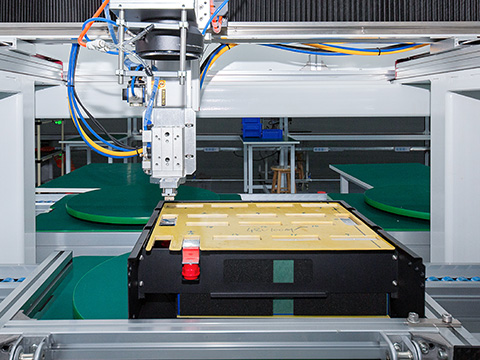In recent years, wind power has emerged as a key player in the global shift toward renewable energy. However, one significant challenge persists—the intermittent nature of wind power. As wind is not a constant energy source, fluctuating output levels can affect the reliability of the entire power grid.
Enter the energy storage system in wind applications, a solution that helps bridge the gap between generation and demand, ensuring stable, reliable, and sustainable energy output. But how does this work, and what role do storage batteries play in enhancing wind power reliability?
In this article, we will explore how energy storage systems (ESS) are integrated into wind power applications to overcome the unpredictability of wind energy. We will also delve into the specific advantages of battery storage systems and how they benefit both utility companies and custom solution buyers looking to invest in reliable wind energy systems.
The Role of Energy Storage Systems in Wind Power
Wind power has immense potential, but its biggest limitation is that it depends on weather conditions, making energy generation inconsistent. Energy storage systems (ESS) play a pivotal role in addressing this issue by storing excess energy generated during peak wind periods and releasing it when wind speeds are low or demand spikes. This ensures a steady energy supply and reduces power fluctuations in the grid.
Moreover, integrating battery energy storage systems (BESS) into wind applications helps smooth out short-term variability and provides backup during downtimes. This reliability enhancement makes wind energy a more viable option for utility companies and large-scale industrial operations that require consistent power levels to function.

Scalable Lithium-ion Battery
Why Battery Storage is Essential for Wind Applications
Among various energy storage options, batteries stand out as the most flexible and scalable solution. These systems are especially useful in off-grid wind power applications, where energy availability is critical. Lithium-ion batteries, in particular, are favored due to their high energy density, long lifespan, and faster response times compared to other storage technologies.
Key Benefits of Battery Energy Storage Systems in Wind Applications
- Peak Shaving and Load Leveling: Batteries can store energy when wind production is high and release it during peak demand, balancing the grid load.
- Frequency Regulation: Wind farms integrated with batteries can provide immediate power injections to help stabilize grid frequency during fluctuations.
- Black Start Capability: In the event of a grid failure, battery storage systems can enable a "black start," allowing wind farms to resume operation without the need for external power.
- Energy Arbitrage: Excess wind energy can be stored and sold during periods of high demand and pricing, increasing profitability for wind farm operators.
Case Study: A Wind Farm Utilizing Battery Energy Storage
One notable example of battery storage being integrated with wind power is a large-scale wind farm in Texas. Here, a utility company installed energy storage systems to stabilize the power output from their 200 MW wind farm.
Before the installation, the grid frequently experienced voltage instability due to sudden drops in wind speed. However, with lithium-ion battery systems in place, the farm now provides a reliable energy source, compensating for shortfalls and supplying power to nearby cities even when wind conditions are poor. This application highlights how battery systems ensure continuous, dependable power from an inherently intermittent energy source.

Challenges of Energy Storage in Wind Applications
While the integration of energy storage systems in wind applications offers many benefits, there are still challenges that need to be addressed.
- Cost: The upfront costs of installing large-scale battery storage systems remain high. However, ongoing technological advancements are helping reduce these costs, making energy storage more affordable.
- Battery Lifespan and Maintenance: Batteries degrade over time, and their performance diminishes with repeated charge-discharge cycles. Ensuring proper maintenance and system monitoring is crucial to extending the lifespan of storage systems.
- Grid Integration: The successful integration of battery energy storage systems with the existing grid infrastructure requires careful planning, as the grid must be able to accommodate fluctuating power inputs from both wind energy and battery systems.
Future of Energy Storage Systems in Wind Applications
As the world moves towards a more sustainable future, battery storage technology is expected to play a crucial role in advancing wind power. Innovative developments like solid-state batteries and flow batteries are on the horizon, offering improved energy densities and longer lifespans. Furthermore, government incentives and policies promoting renewable energy integration are accelerating the adoption of energy storage systems in wind applications.
In the near future, we can expect to see more hybrid energy systems, combining wind, solar, and battery storage to create highly efficient and reliable renewable energy sources. Such systems will not only ensure energy security but also help reduce reliance on fossil fuels, significantly lowering carbon footprints worldwide.
Conclusion
Incorporating an energy storage system in wind applications is essential to addressing the intermittent nature of wind power. With battery storage solutions, custom energy buyers can achieve more reliable, consistent, and profitable wind energy systems. As technology continues to evolve, we anticipate that energy storage will become an integral part of the renewable energy landscape, making wind power more viable and dependable for large-scale applications.
For companies and custom buyers looking to invest in reliable and efficient wind energy solutions, the future lies in the seamless integration of energy storage systems. By harnessing the potential of battery storage, wind power can become vital to the global energy transition, paving the way for a cleaner, more sustainable future.
For custom energy storage solutions and more information, visit Aokly's official website to explore our range of high-performance storage batteries tailored for wind power applications!

 EN
EN 



